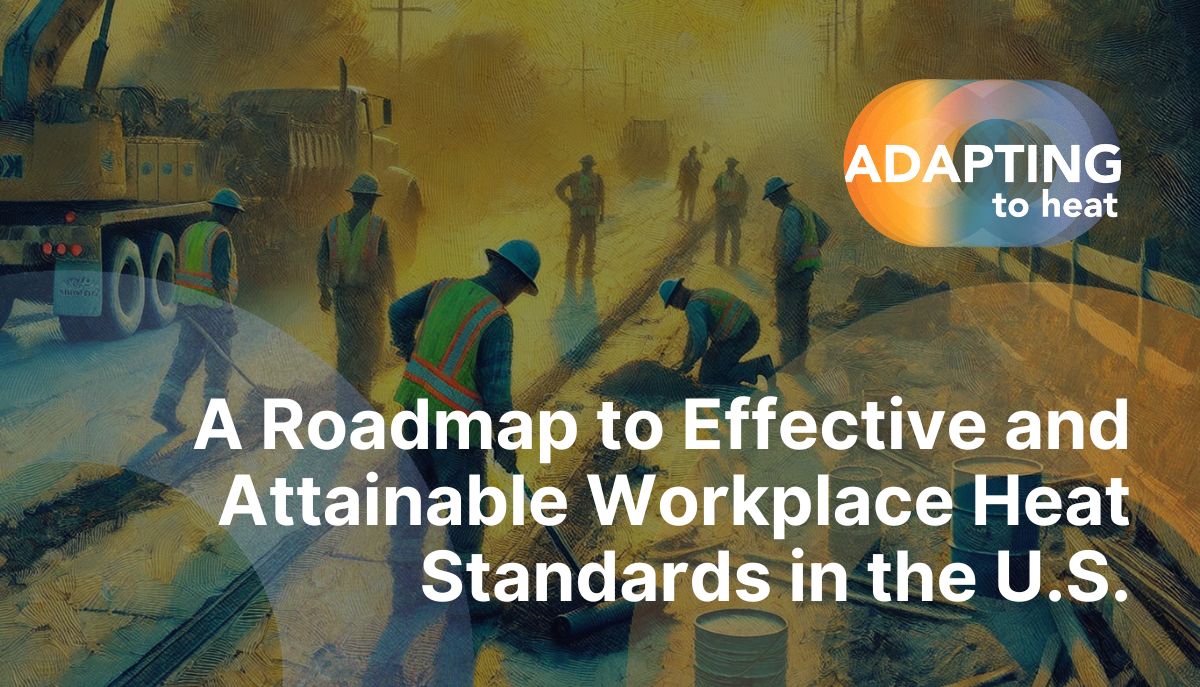
Current efforts to protect workers from heat in the U.S., which include a new rule proposed by the Occupational Safety and Health Administration (OSHA), are only a first step and must be supplemented by further action, argue a group of researchers including experts from La Isla Network.
Record-breaking temperatures driven by climate change are increasing the risk of heat-related illness, injury and death among workers. In recent years, concern for protecting workers from heat has increased, among both workers and the people vying to protect them.

In July OSHA released a proposed rule outlining heat protecting standards that would apply to all workers in the U.S. Experts broadly agree the heat standard is a necessary step in protecting workers, and more action is needed to supplement the effort.
In an editorial published in Occupational and Environmental Medicine, La Isla Network researchers argued that current efforts are only a first step towards “a universal mandate of fundamental protections for all workers.” They proposed a strategy for the implementation of “effective and attainable” workplace heat protections in the U.S. and beyond.
Jason Glaser, CEO of La Isla Network explains:
“The federal heat standard is a great step but it is important to frame it as just phase one. What is needed in conjunction with a federal heat standard is occupational safety and health interventions that are driven by data, physiologically effective and economically viable, demonstrating from the outset that protecting workers isn’t a burden but a competitive advantage where productivity is likely to go up.”
The researchers discuss several limitations of the current OSHA rule, including:
- The heat index thresholds of the rule (80°F and 90°F), which do not reflect the full-spectrum of heat-risks, such as high solar radiation, metabolic heat load, and physiological strain. This underestimates risk to worker health and makes the rule unlikely to be effective after reaching higher heat thresholds in extreme environments.
- While the rule offers an option for employers to account for workload and more specific environmental conditions using the Wet Bulb Globe Temperature (WBGT), employers are likely to choose the easier option of using “off-the-shelf” heat index values provided by the National Weather Service, which do not account for solar heat load (the amount of solar energy entering the workplace and further increasing temperatures).
- For employee breaks, the National Institute for Occupational Safety and Health’s (NIOSH) non-mandatory work-rest schedules are impractical when actually put into practice. Researchers argue that in the tropics or during the summers in the US South, following NIOSH’s guidelines could reduce work to 15 minutes per hour for the majority of the workday, or lead to work being called off altogether.
Despite these limitations, the researchers believe that the OSHA rule could help lay the groundwork for a “broader, phased approach” that includes:
- Access to water, shade, mandatory rest breaks, sanitation, education about heat stress, and emergency heat response plans.
- “Enhanced guidelines with data-driven measures,” including the development of appropriate work-rest schedules through consistent monitoring of environmental and metabolic heat production (when the cells in your body generate heat from taking in oxygen and releasing carbon dioxide). This would encourage context-oriented guidelines that are informed by research and could be adjusted for individual workplaces.
- Focus on the implementation of data-driven work-rest schedules.
Thank you for reading. La Isla Network’s work is as urgent as ever. Protecting workers takes sustained effort, resources and commitment to develop the tools and interventions needed to protect workers from the hidden risks of heat stress.
You can be part of the solution. Our fundraising campaign runs through the end of the year, with a goal of raising $15,000. Your contributions will help fund vital research, pilot new monitoring systems and implement field-tested interventions in some of the world’s most demanding labor environments.

When extreme becomes the norm, your action becomes essential. Together, let’s build a safer future for those who harvest the world’s food. Donate today to support our mission.
La Isla Network is an occupational health research and advisory nonprofit dedicated to ending heat-related illnesses among workers and their communities worldwide. We develop and implement data-driven worker protection and management assessment protocols to improve the resiliency of workforces and businesses to heat stress. Our work is backed by best-in-class researchers, industry leaders and government and multilateral institutions like the ILO. For more information please email in**@***********rk.org.








